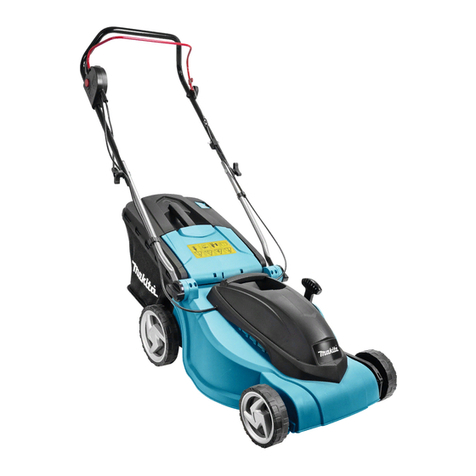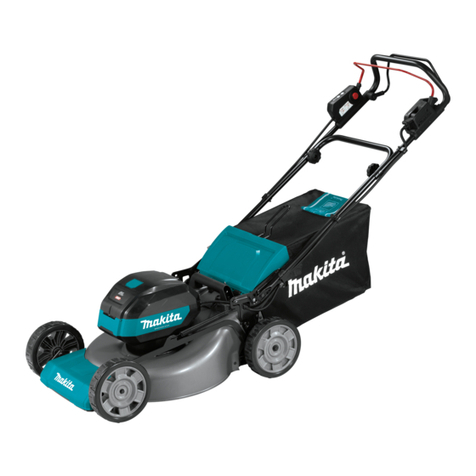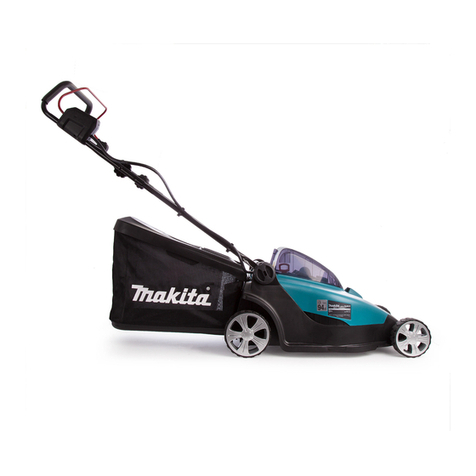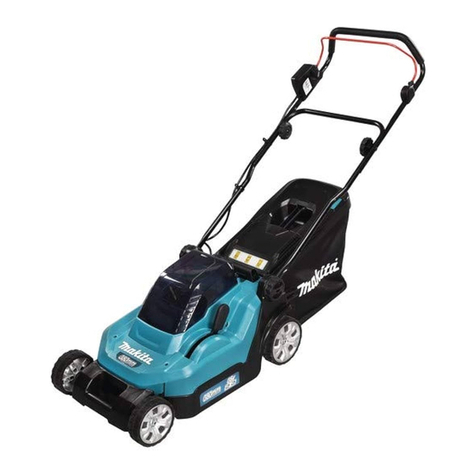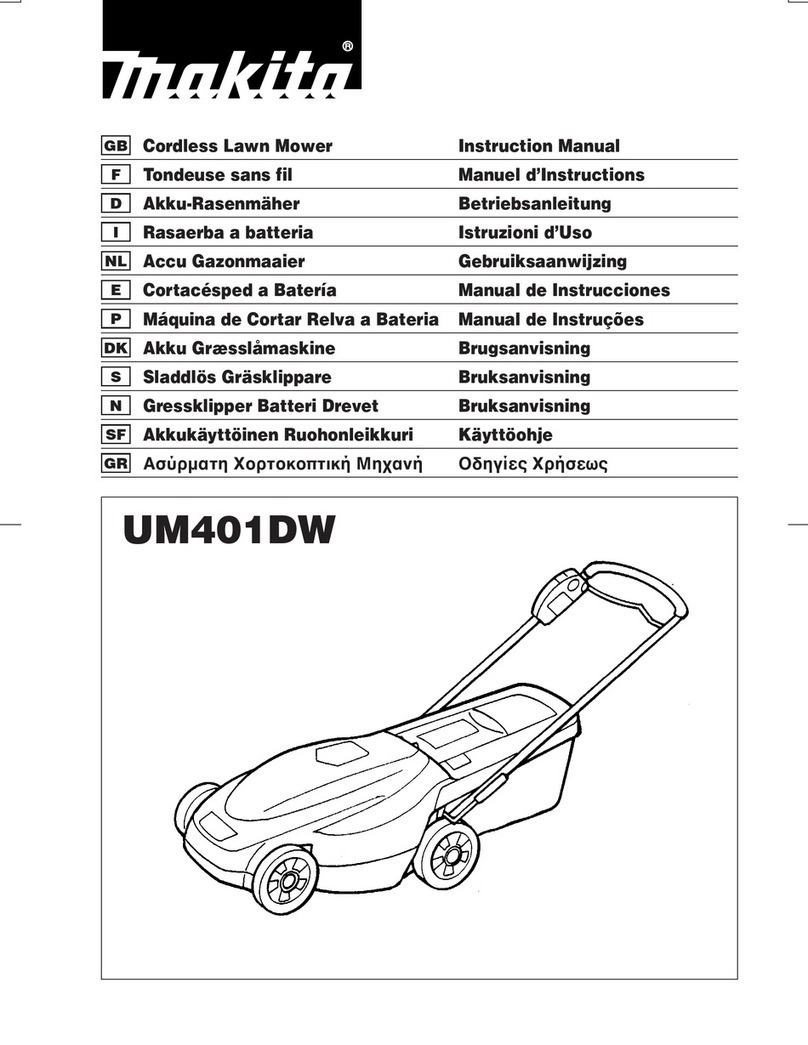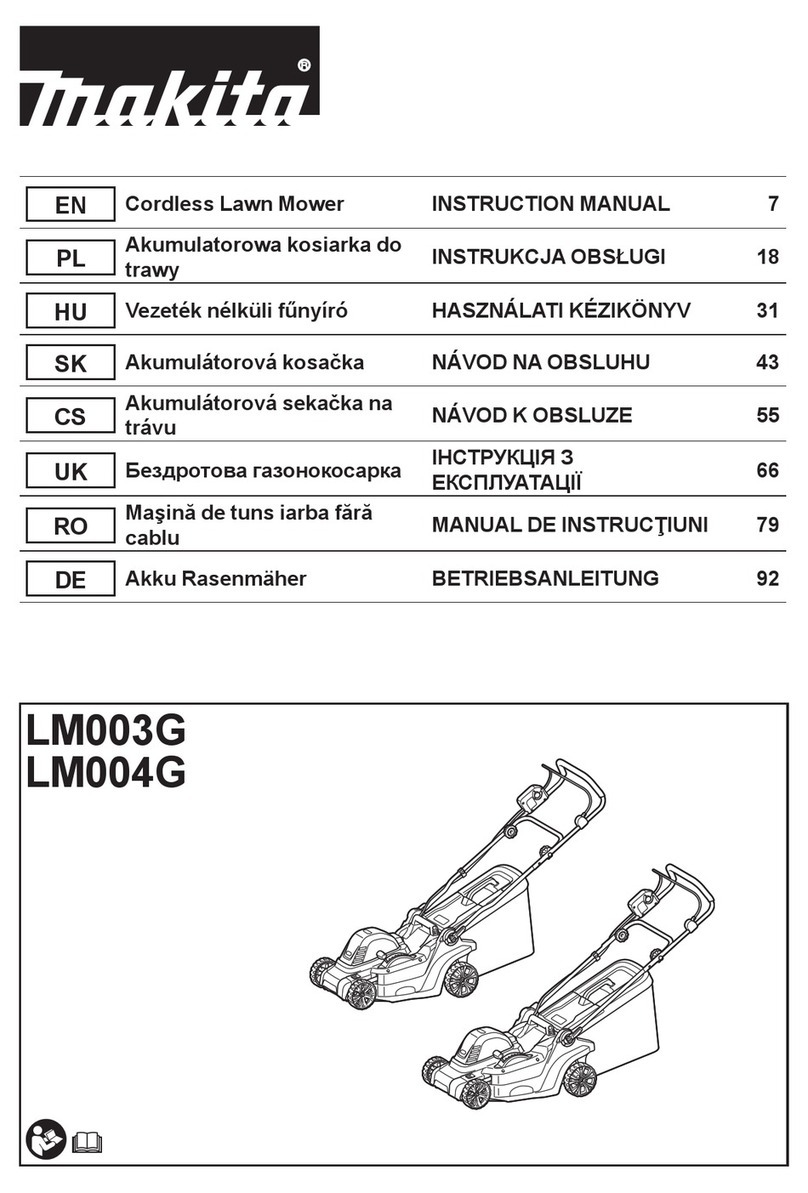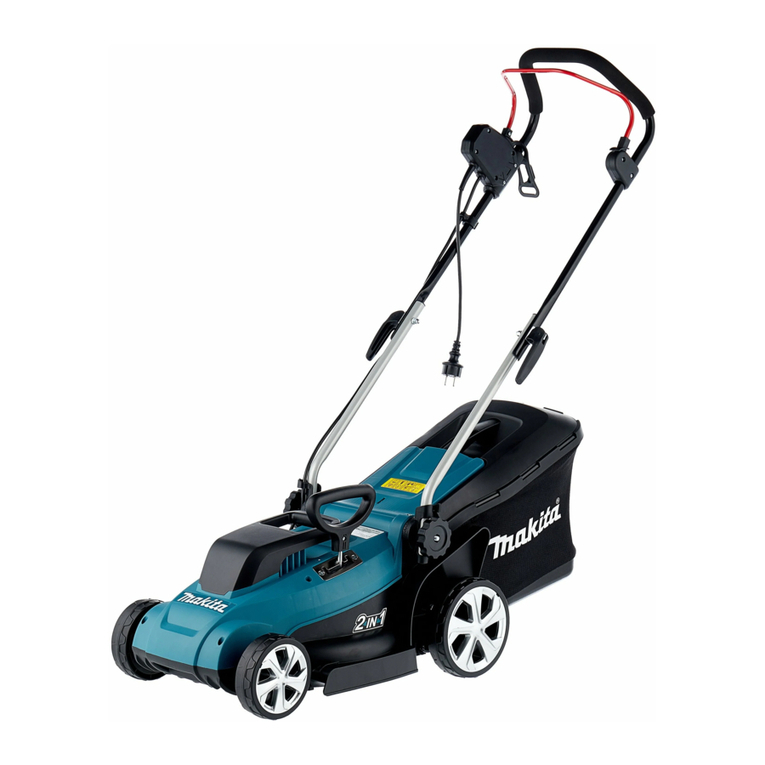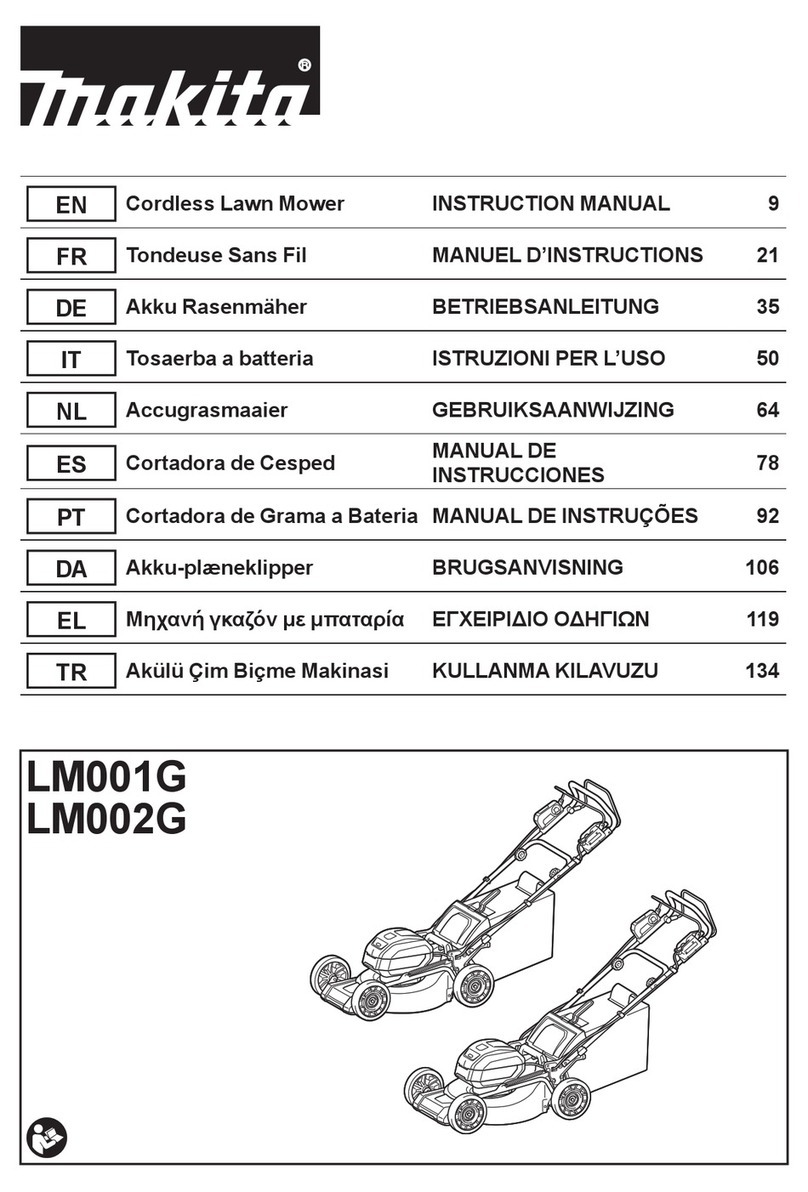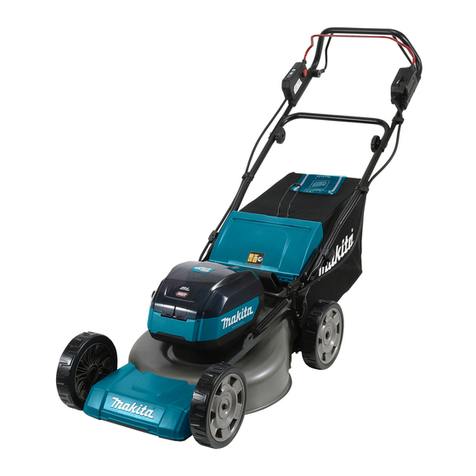
3ENGLISH
8.
Check the blades or blade bolts carefully for cracks
or damage before operation. Replace cracked or
damaged blades or blade bolts immediately.
Operation
1. Avoid Dangerous Environment - Never operate
the mower in damp or wet locations. Always be
sure of your footing: keep a rm hold on the han-
dle and walk; never run.
2. Don't Use In Rain.
3. Use Right Appliance - Do not use lawn mower for
any job except that for which it is intended.
4. Don't Force Lawn Mower - It will do the job better
and safer at the rate for which it was designed.
5. Don't Overreach - Keep proper footing and
balance at all times. Do not mow near drop offs,
ditches, or embankments. You could lose your
footing or balance.
6. Stay Alert - Watch what you are doing. Use com-
mon sense. Do not operate lawn mower when you
are tired. Do not operate machine while under the
inuence of alcohol or drugs. A moment of inat-
tention while operating the mower may result in
serious personal injury.
7. Remove Battery From Lawn Mower - Remove
the battery when not in use, before servicing,
cleaning, removing material from the lawn mower,
or changing accessories such as mower blades,
and the like.
8.
Keep hands and feet away from cutting area.
Keep clear of the discharge opening at all times.
9. If the mower strikes a foreign object, follow
these steps:
• Stop the mower. Release the switch. Wait
until the blade comes to a complete stop.
• Remove the lock key and the battery
cartridge.
• Inspect the mower for any damage.
• Repair any damage before restarting and
operating the mower. Replace the blade if it
is damaged in any way.
10. Never direct discharged material toward
anyone. Avoid discharging material against a
wall or obstruction. Material may ricochet back
toward the operator. Stop the blade when crossing
gravel surfaces.
11. Do not pull the mower backwards unless
absolutely necessary. When you are compelled
to back the mower from a fence or other similar
obstruction, look down and behind before and
while moving backwards.
12. Release switch lever and wait for blade rota-
tion to stop before crossing driveways, walks,
roads and any gravel-covered areas. Also
remove the lock key if you leave it, reach to pick
up or remove something out of your way, or for
any other reason that may distract you from what
you are doing.
13.
Do not operate machine without the entire grass
catcher, discharge guard, rear guard, or other
safety protective devices in place and working.
14. Stop the motor and remove the lock key when-
ever you leave the equipment, before cleaning
the mower or unclogging the chute and mak-
ing any repairs or inspections.
15. Shut the motor off and wait until the blade
comes to a complete stop before removing the
grass catcher. Beware that the blades coast after
turn off.
16. Mow only in daylight or good articial light.
17. If the mower starts to vibrate abnormally
(check immediately)
- inspect for damage,
- replace or repair any damaged parts,
- check for and tighten any loose parts.
18. Don't grasp the exposed cutting blades or
cutting edges when picking up or holding the
appliance.
19. Never attempt to make cutting height adjust-
ments while mower is running if the mower
has cutting height adjustment feature.
20. Mow across the face of slopes, never up and
down. Exercise extreme caution when chang-
ing direction on slopes. Do not mow exces-
sively steep slopes. Poor footing could cause a
slip and fall accident.
21. Avoid operating the mower in wet grass.
22. Stop operation immediately if you notice
anything unusual. Switch off the mower and
remove the lock key. Then inspect the mower.
23. Do not start the mower when standing in front
of the discharge opening.
24. Avoid using the mower in bad weather con-
ditions especially when there is a risk of
lightning.
Maintenance and storage
1. Store Idle Lawn Mower Indoors - When not in
use, lawn mower should be stored in an indoor dry
and locked-up place - out of reach of children.
2. Maintain Lawn Mower With Care - Keep cutting
edges sharp and clean for best and safest per-
formance. Follow instructions for lubricating and
changing accessories. Inspect lawn mower cord
periodically and if damaged, have it repaired by
an authorized service facility. Keep handles dry,
clean, and free from oil and grease.
3. Keep machine free of grass, leaves, or other
debris build up. Keep guards in place and in
working order.
4. Keep blades sharp.
5. Use identical replacement blades only.
6. Check the grass basket frequently for wear or
deterioration. For storage, always make sure
the grass basket is empty. Replace a worn grass
basket with a new factory replacement one for
safety.
7. Check grass basket components and the
discharge guard frequently and replace with
manufacturer’s recommended parts, when
necessary.
8. Do not wash with a hose; avoid getting water
in motor and electrical connections.
9. Check the blade mounting bolt at frequent
intervals for proper tightness.
10. Keep all nuts, bolts, and screws tight to
be sure the equipment is in safe working
condition.
